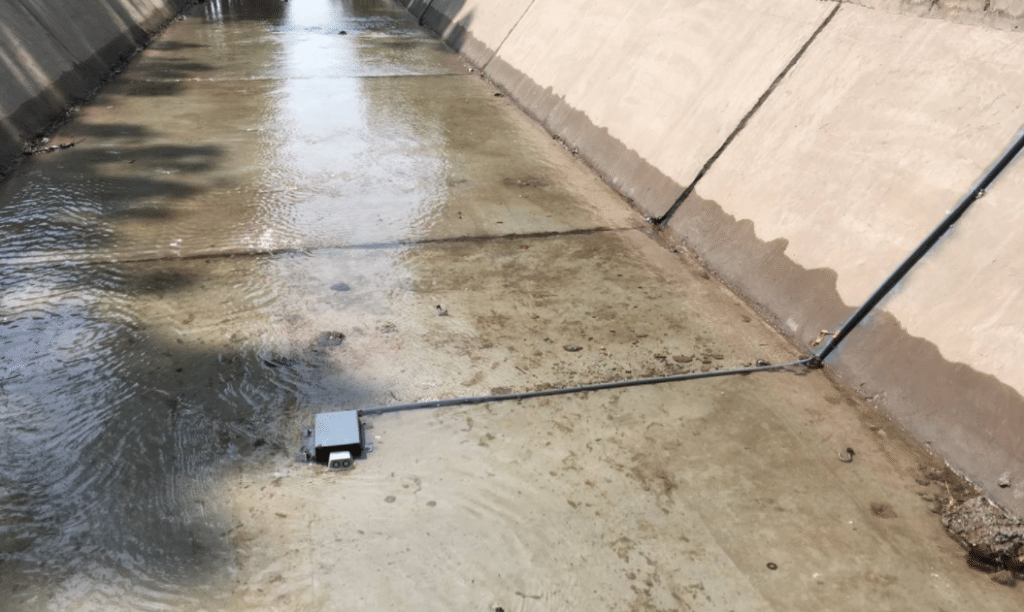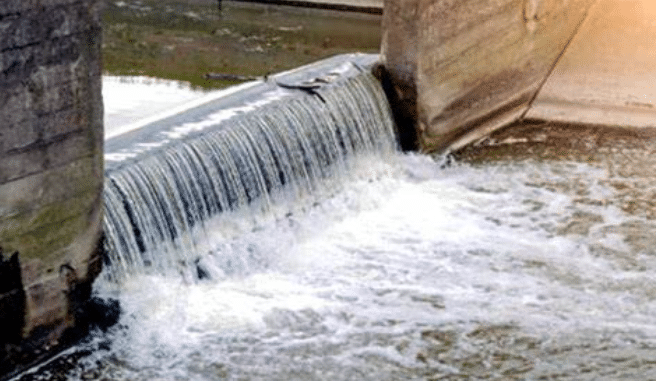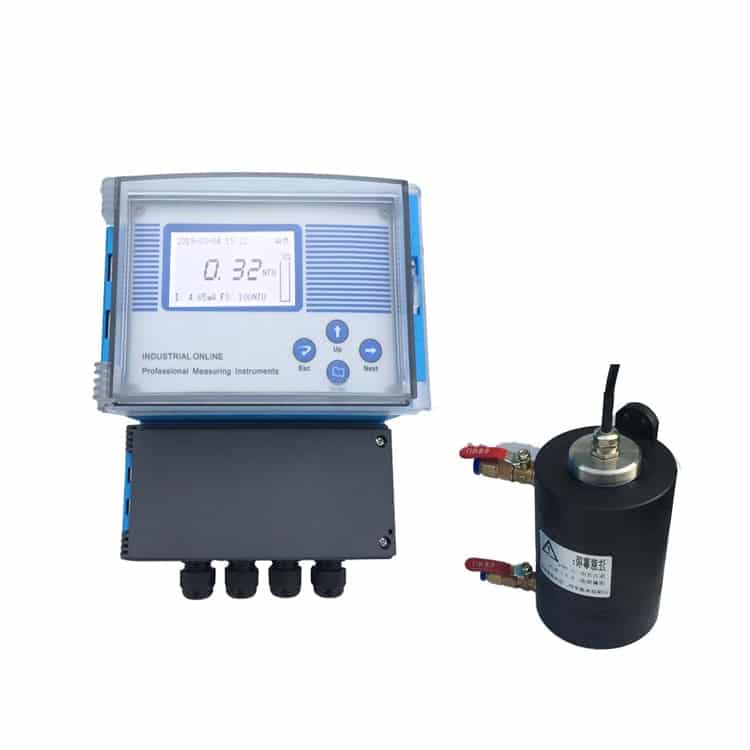Turbidity is intrinsically linked to water quality. It measures the overall clarity of water by looking at the amount of light scattered when it hits the surface of a water sample. If the light scattering is significant, this indicates that the water has high turbidity. Some of the materials that can contribute to high turbidity include silt, clay, organic and inorganic materials, dissolved organic compounds and algae. If a water sample has a high turbidity reading, this means that the water is contaminated and should be treated before being used in an industrial process or as drinking water.
Turbidity Sensor Applications
If you want to measure the turbidity of your water on a regular basis, you may need to obtain a turbidity sensor to do so. They are usually in-line sensors that can be installed at various points in an industrial process. When installed, these sensors can immediately detect how much particulate matter is in the water. This type of sensor can be used for a wide range of different applications, including
- CIP reflux lines
- Phase separation of various products
- Yeast harvesting in breweries
- Raw material receiving chambers
- Gasket and filter leak detection
- Phase changes, including product-to-product, water-to-detergent, and product-to-water
How to use turbidity sensor?
Turbidity sensors are a very useful technology to identify the transparency of a water sample. When the light beam is placed on the surface of the water, the light will come into contact with any particles in the water. These particles cause the light to scatter and the turbidity sensor is able to measure it effectively. If the light beam scatters more than expected, this means that the water contains a large amount of contaminants.
If you use a turbidity sensor with pure water, the readings you receive from the sensor will be very low because there are almost no solid particles in the water. As mentioned earlier, turbidity sensors can be used in many different applications, from leak detection in gaskets and filters to yeast harvesting in breweries. Turbidity sensors can also be used in water treatment facilities to detect the concentration of particulate matter, thus allowing these facilities to determine if further treatment is needed.
While it is easy to notice high turbidity in water, turbidity sensors can provide you with accurate measurements, which may be necessary depending on the industrial application you are using. The sensor will measure all of the suspended solids in the water, thus telling you exactly how much water you need to treat.
The importance of measuring turbidity depends on the reason for making these measurements. If you receive a high turbidity measurement in a stream, siltation and sedimentation may occur, which can damage the habitat for fish and other types of aquatic life. The presence of suspended solids in the water also increases the likelihood of other contaminants leaching into the water, including bacteria and metals. If you want to identify potential contamination in a body of water, turbidity sensors can help you do just that.
When looking specifically at human health, turbidity sensors help ensure that drinking water does not contain too many contaminants. If drinking water contains high levels of turbidity, anyone who drinks it may experience some health problems. Remember, pathogens can get the food and shelter they need to survive in turbid conditions. If contaminants are not properly removed, pathogens are likely to regenerate, which can lead to outbreaks of waterborne diseases. Whether you are using a turbidity sensor to measure drinking water or wastewater, low readings are always important.
Measurement of turbidity

The method of measuring water turbidity depends greatly on the application of the sensor. If the sensor is placed in a river, you will be able to receive instantaneous readings of turbidity levels. To take turbidity readings in a river, a long device is placed directly into the water. At the end of the device is the turbidity sensor.
The sensor will read the turbidity level of the river by shining a small light into the water, and then the light will scatter. The sensor gets a reading by identifying how much light is reflected back at the sensor. If a large amount of light is reflected back, this indicates that the river contains high turbidity and many pollutants. Keep in mind that the lengthy equipment mentioned earlier can be equipped with multiple sensors at a time, including everything from conductivity sensors to pH sensors.
If the river has high turbidity, you may notice that the water is opaque or cloudy. You may also notice a slight greenish tinge to the water if the water has been flowing low for a long period of time.
When a rainstorm hits, many sand particles from nearby land seep into the river, causing the water to turn a muddy brown color. If you measure turbidity levels at this time, you will receive high readings. When the current is high, the water is flowing faster, which causes suspended material to be stirred up and rise from the riverbed.
Choose the right turbidity sensor

You can choose from several different turbidity sensors for your facility or business. The sensor you choose will depend largely on the application it is used for. Some of the many applications where you can use a turbidity sensor include
- Wastewater
- Water
- Food and beverage
- Power
- Petrochemicals
- Semiconductor
- Chemicals
- Life Sciences
There are three main types of sensors, including turbidity sensors, suspended solids sensors, and absorption sensors. If you are measuring drinking water or other types of low turbidity water, then a turbidity sensor may be right for you. Suspended solids sensors, on the other hand, are ideal for measuring high turbidity. In fact, this type of turbidity sensor is often used in wastewater applications. If turbidity values fluctuate greatly, you may need to use an absorption sensor. Once you have determined the type of turbidity sensor that is right for you, it should be easy to find the exact sensor to purchase.
Turbidity sensors are based entirely on the turbidity method, which detects how light energy is scattered. These special sensors use a light detector and an LED light, the former positioned at a 90 degree angle.
When the light is turned on, a beam of light is directed into the medium, after which the light is scattered as it encounters certain types of particles. As the light scatters, it creates a reflection that the sensor can measure. If the reflection has high intensity, the sensor will display a high turbidity reading. After these readings are captured, they are displayed on the sensor’s electronic display.
As for absorption sensors, they work by measuring how particles in the water absorb light. These sensors are also equipped with light detectors and lamps. The main difference between a turbidity sensor and an absorption sensor is that the light detector in the absorption sensor is placed on the opposite side of the lamp.
The particles in the water then attenuate the light and the light is converted into an electrical signal which itself can be converted into a final turbidity reading. Advanced absorption sensors are equipped with different arrangements for the lamp and the light detector, resulting in more reliable results.
The third and final type of turbidity sensor involves suspended solids sensors. These sensors use backscattered light technology and are equipped with two light detectors next to an LED lamp. Any solid particles in the water will cause the light to scatter effectively.
Once the detectors pick up the scattered light, these systems can determine the level of suspended solids in the water. As mentioned earlier, these sensors are ideal for applications with significantly higher turbidity readings.
Benefits of turbidity sensors
There are many obvious benefits to using turbidity sensors to measure the quality of water. For one thing, there are many turbidity sensors and instruments that can measure water in any application. In addition to turbidity sensors, you can get turbidity transmitters and any accessories needed to capture accurate measurements.
There is also a great deal of flexibility in how you can use turbidity sensors. For example, you can mount these sensors in a flow assembly for in-line measurements or in a pipe. You can also place these sensors in a pool, tank or open channel. Another significant benefit of using turbidity sensors is that you can get readings for several different indicators, including NTU, FTU and FNU.
In general, turbidity sensors are very easy to use and should provide you with results quickly. Once the sensor is placed in the water column, the turbidity measurement process can be completed without any problems. You will also find that turbidity sensors provide a quick return on investment. These sensors are affordable, yet provide accurate turbidity results that can be used to increase production or reduce CIP supplies. Now that you have a better understanding of how turbidity sensors work, all you need to do is determine the best type of sensor for your situation.
Summary
Turbidity sensors play an important role in many fields such as water treatment, industry and environmental monitoring. Measurement accuracy and data reliability can be improved by choosing the right type of sensor and regular maintenance and calibration. With the development of intelligent technology, turbidity monitoring will become more efficient and accurate.
Apure offers turbidity sensors as well as water quality analyzers for other parameters, such as pH, DO, conductivity, chlorine and more. There are also flow and level measurement instruments, temperature and pressure measurement instruments. Please contact us for further information.
More articles on other water quality parameters:
What is pH sensor & How does it work?
Water level sensor types and works
Types of IoT sensors
What is a pressure transmitter?



